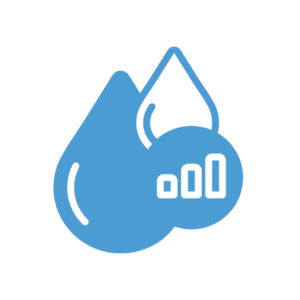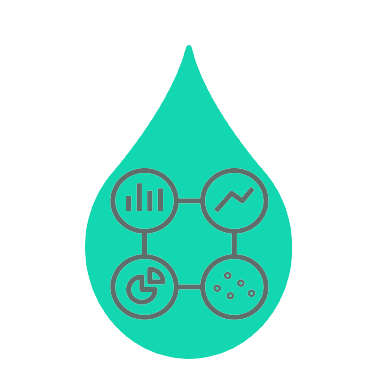At the start of the pandemic, there was uncertainty about how water and wastewater utilities’ revenues and finances might be affected. Many utilities and local governments were concerned with loss of revenue from the commercial sector, as well as the financial implications of statewide moratoria on late fees and disconnections for non-payments designed to ensure that everyone has adequate access to water and sanitation during a designated public health emergency. Various polls and case studies were analyzed to gauge early and ongoing effects on the utilities’ financial condition. Now, the release of audited data in local governments’ annual financial statements provides additional information and insights. This blog post summarizes how over 300 local government water and wastewater utilities in North Carolina fared at the end of Fiscal Year 2020 (end of June 2020 for all local governments in the state) compared to previous years. The audited data include the first three months of the pandemic.
Category: Smart Management for Small Water Systems (Page 1 of 10)
This is the first of a series of three posts on utility data management. The Environmental Finance Center collects all sorts of data for projects. The EFC uses data from regulatory agencies, financial reports, and data on area residents from the US Census Bureau.
The project design questions the EFC asks are:
- Know the users! Are they:
- Decisionmakers?
- Staff?
- The public?
- What should be shown?
- Decisionmakers need reliable data on cost and benefits
- Staff may need to drill down on details
- Overall, tell a story
- What data exists to support and analyze how can different data sources be connected?
For water and wastewater rates dashboards, the EFC’s primary audience is staff of utilities and the secondary audience are utility board members and decisionmakers. The EFC shows utility rates and, importantly, the context for those rates. Multiple dials show the user the balance between factors such as operating ratio and affordability. Comparison groups let the user look at their rates in comparison with other utilities in their watershed or with utilities serving similar numbers of customers. This year, the EFC has added dials for non-revenue water and for wastewater inefficiency to the North Carolina dashboard.
Some of our workshops for small drinking water systems cover the topic of workforce planning—how do we keep our best employees, and how do we find more great employees to bring on board? As part of the day, we ask all participants to share how they got into the water business, and we hear a variety of stories. Some people got into the field based on the recommendation of a friend or family member. Some start with the broader organization in other roles but eventually find themselves working in water. Several attendees explain that they were in other fields up until the Great Recession or up until their jobs were outsourced and were looking for a job unlikely to go away. Continue reading
Did you know there are over 250 publicly owned small water systems serving less than 1,000 connections in North Carolina? In the case of water and wastewater utilities, bigger can often mean better.
The Environmental Finance Center at the University of North Carolina at Chapel Hill was asked earlier this year to take the lead on a wastewater regionalization study for a small town of 700 people in Western North Carolina. The Town (which will remain anonymous as the study is still in progress) had been awarded a regionalization grant from the North Carolina Department of Environmental Quality’s Division of Water Infrastructure (DWI) to study alternatives to their existing wastewater business model. Continue reading
The State Revolving Fund (SRF) programs have become a well-known financing option for many water and wastewater infrastructure projects across the country. This is mainly due to the longevity of the clean water (CWSRF) and drinking water (DWSRF) programs and the appealing financing options, such as low-interest rates, offered in each state. However, many communities across the country still struggle to obtain this federal money, despite the borrowing incentives, due to capacity at the community level. In 2014, changes in the Clean Water Act permanently added an affordability section[1] to the CWSRF program. On the DWSRF program side, the American Recovery Act of 2009 required states to offer additional forms of subsidization to applicants, including principal forgiveness[2]. This brings up the question: What metrics are states using—or should consider using—to determine principal forgiveness eligibility for low-income communities? Continue reading







